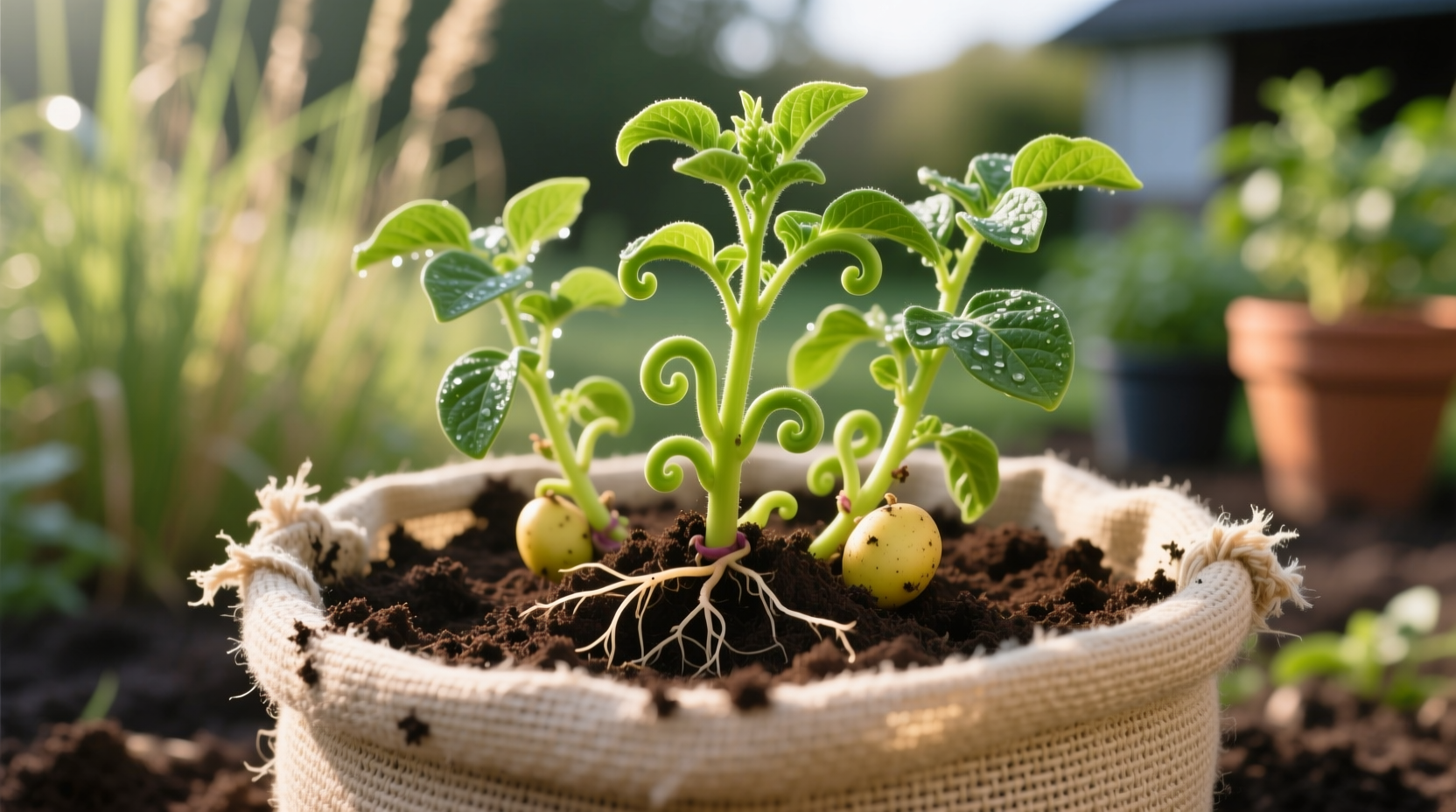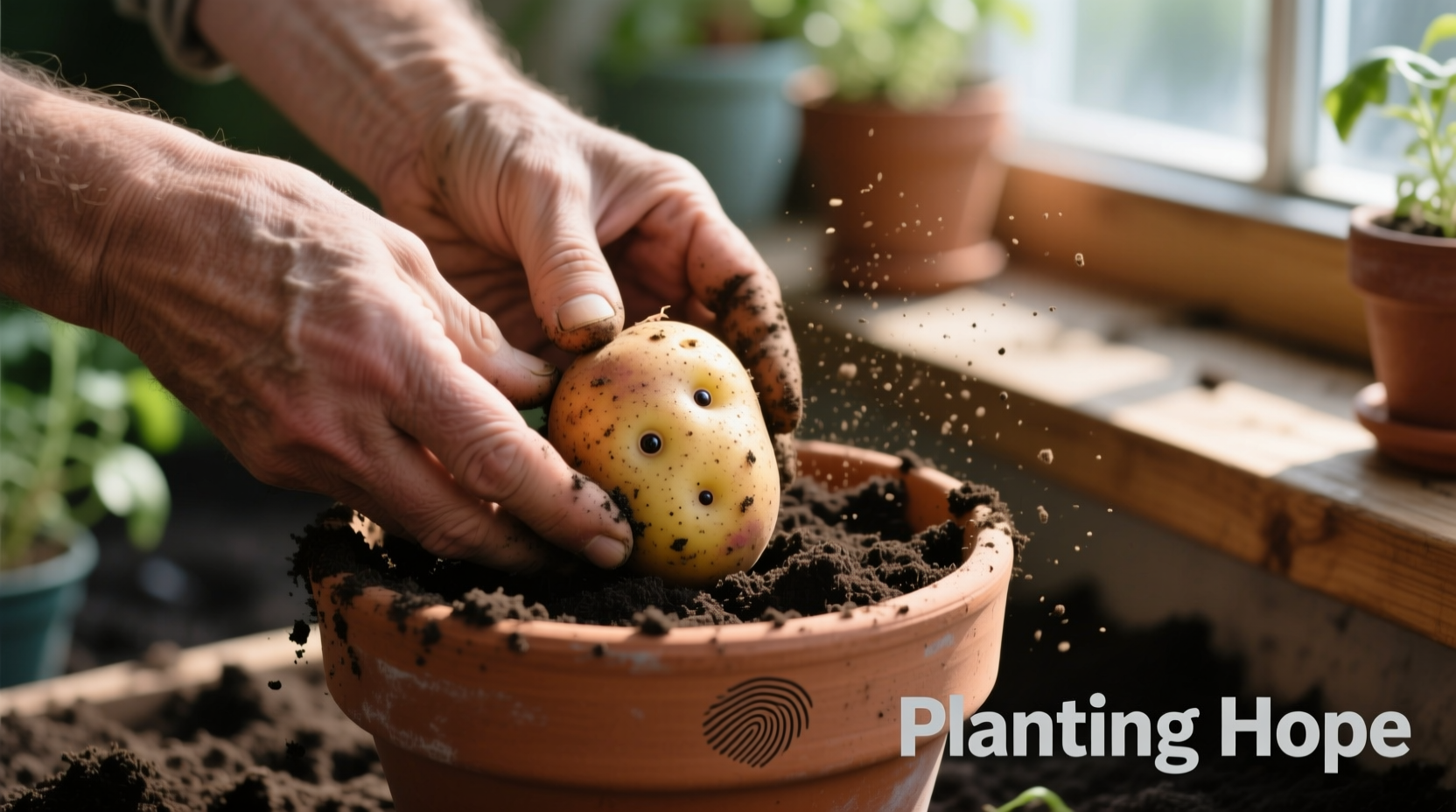Why Container Potato Growing Works When Done Right
Container gardening solves space limitations while giving you complete control over soil conditions—critical for preventing common potato diseases. According to Oregon State University Extension, container-grown potatoes often yield better results than garden beds in urban environments due to reduced pest pressure and optimized drainage.
Your Complete Potato-in-Pot Roadmap
Essential Materials Checklist
Before planting, gather these non-negotiable items:
- Container: Minimum 15-gallon capacity with drainage holes (fabric grow bags work exceptionally well)
- Potato varieties: Choose determinate types like 'Yukon Gold', 'Red Norland', or 'French Fingerling'
- Soil mix: 60% potting mix + 30% compost + 10% perlite (never use garden soil)
- Fertilizer: Balanced organic 5-10-10 formula
| Potato Variety | Days to Maturity | Container Yield | Best For |
|---|---|---|---|
| Yukon Gold | 70-90 | 4-6 lbs | All-purpose cooking |
| Red Norland | 65-80 | 3-5 lbs | Early harvest |
| French Fingerling | 85-100 | 2-4 lbs | Roasting |
Step-by-Step Planting Process
Week 1: Chitting Preparation
Place seed potatoes in indirect light for 2 weeks until 1/4-inch sprouts develop. This critical pre-planting step increases yield by 20% according to University of Minnesota Extension.
Planting Day: The Container Method That Works
- Fill container bottom with 4 inches of soil mix
- Place 2-3 chitted potatoes sprout-side up
- Cover with 3 inches of soil mix
- Water thoroughly until drainage begins
- Store in 50-65°F location for 2 weeks until shoots emerge

Container-Specific Care Requirements
Container potatoes demand different care than garden-grown varieties:
Watering Protocol: Check soil moisture daily—containers dry out 40% faster than garden beds. Water when top 1 inch feels dry, providing 1-2 gallons per session. Never let soil completely dry between waterings during tuber formation (weeks 5-8).
Hilling Technique: When plants reach 8 inches tall, add 3 inches of soil mix around stems—this critical step prevents greening and increases yield. Repeat every 2 weeks until container is full.
Fertilizing Schedule: Apply liquid fertilizer at half-strength when plants reach 6 inches, then every 3 weeks. Over-fertilizing causes excessive foliage at the expense of tubers.
Common Container Growing Challenges & Solutions
Problem: Small or misshapen potatoes
Solution: Caused by inconsistent watering or overcrowding. Maintain even moisture and limit to 2-3 plants per 15-gallon container.
Problem: Yellowing lower leaves
Solution: Normal after week 6 as energy shifts to tubers. Remove affected leaves to improve air circulation.
Problem: No tuber formation
Solution: Usually insufficient sunlight (needs 6+ hours daily) or excessive nitrogen. Switch to potassium-rich fertilizer during flowering stage.
Harvesting Timeline & Yield Expectations
Container potatoes follow this predictable growth pattern:
| Growth Stage | Timeframe | Container-Specific Action |
|---|---|---|
| Sprouting | Weeks 1-2 | Keep soil moist, no direct sun |
| Vegetative Growth | Weeks 3-5 | Begin regular hilling, increase watering |
| Tuber Formation | Weeks 6-8 | Maintain consistent moisture, add potassium |
| Maturity | Weeks 9-12 | Reduce watering, watch for yellowing foliage |
Harvest "new potatoes" 7-10 days after flowering for tender small tubers, or wait until foliage dies back completely for storage potatoes. Expect 3-5 pounds from a properly managed 15-gallon container—significantly less than garden beds but remarkably efficient for small spaces.
Container Limitations to Understand
While convenient, container growing has important constraints:
- Maximum yield per square foot is 50% less than garden beds
- Requires daily moisture monitoring during hot weather
- Not suitable for indeterminate varieties like Russets
- Soil temperature fluctuates more than in-ground planting
FAQ: Container Potato Growing Questions Answered
Can I use regular garden soil in my potato container?
No—garden soil compacts in containers, restricting root growth and drainage. Use a 60% potting mix + 30% compost + 10% perlite blend for optimal aeration and moisture retention. Container-specific soil prevents common issues like root rot.
How often should I water potatoes in containers?
Check daily during warm weather—containers dry out much faster than garden beds. Water when top inch of soil feels dry, providing enough to see drainage from bottom holes. During tuber formation (weeks 6-8), maintain consistent moisture without saturation.
What's the minimum container size for growing potatoes?
Use at least a 15-gallon container (18" diameter x 16" deep) for 2-3 plants. Smaller containers (<10 gallons) severely restrict root development and yield. Fabric grow bags work better than plastic pots due to superior aeration and temperature regulation.
Why are my container potatoes turning green?
Greening occurs when tubers are exposed to light during growth. Prevent this by proper hilling—add 3" of soil mix around stems whenever 4" of growth appears above soil line. Never let tubers peek through the soil surface.
Can I grow potatoes in containers indoors?
Only with significant supplemental lighting—potatoes need 6+ hours of direct sun daily. A south-facing window plus 12 hours of full-spectrum LED lighting might work, but outdoor containers yield substantially better results. Indoor attempts typically produce small, weak plants.











 浙公网安备
33010002000092号
浙公网安备
33010002000092号 浙B2-20120091-4
浙B2-20120091-4